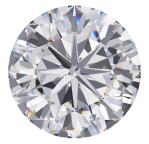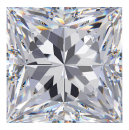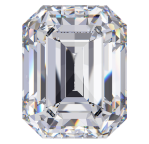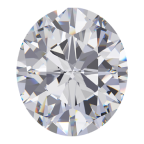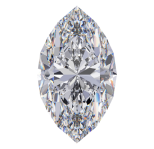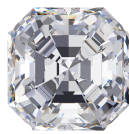This insurance is optional and will meet the demands and needs of a UK resident requiring insurance for jewellery or watches in the United Kingdom, Channel Islands and Isle of Man plus up to 30 consecutive days elsewhere in the world any one trip.
The insurance is administered by T H March & Co. Limited, Hare Park House, Yelverton Business Park, Yelverton, Devon, PL20 7LS, and they are authorised and regulated by the Financial Conduct Authority (FCA). This may be checked on the Financial Services Register on the FCA’s website.
In the unlikely event that you may wish to make a complaint, this should be directed to T H March. The complaints procedure is detailed in your insurance documentation.
It is important you read the certificate as this details the terms, conditions and any restrictions in cover.
Click here to download the insurance product information document (PDF)
The insurance value is higher than our selling price and is the estimated replacement cost if our Diamond Heaven discount were no longer available at the time of a claim.
1 year cover for £62.73 inclusive of IPT
3 year cover for £114.74 inclusive of IPT
Our UK customers can insure their purchase with MarchGuard cover from T H March, providers of specialist jewellery and watch insurance since 1887.
- No excess on claims
- Simple and easy to arrange
- Accidental loss*
- Accidental damage*
- Theft cover*
- Worldwide cover (up to 30 consecutive days abroad)
- All claims are processed through Diamond Heaven (repair or replacement)
- For 3 year policies, protection is included against price inflation on replacement items (see certificate terms for details)
* Subject to terms and conditions of the policy
Click here to view / download the insurance product information document (PDF)
Click here to view / download the full policy wording document (PDF)
- This insurance is for UK residents only
- There is no cover for wear and tear
- There is no cover for items left in unattended baggage or in an unattended vehicle
- There is no cover for any free gifts or accessories that may have come with the purchase
- There is a 14-day cooling off period
- This insurance is NOT renewable after the initial term
- The policy wording provides full details of cover and exclusions and you are requested to read this.
Important notice: Whilst many home insurance policies may cover certain pieces of jewellery or watches we would advise all customers to check their policies closely. Certain household policies have restrictions on watch and jewellery cover, and may include limitations such as, no accidental damage cover, no cover outside of the home or cover for holidays abroad. They may also restrict your choice of jeweller for repair or replacement. In the event of a household insurance claim, you may be expected to pay an policy excess and any claims made may affect your future premiums.
EARRINGS BUYING GUIDE
CHOOSING DIAMOND EARRINGS
Since we opened our first store back in 2010, we’ve seen the growing trend in popularity for diamond earrings. Whether it’s an anniversary, a birthday or a gift for your wedding day, diamond earrings make the perfect addition to your jewellery collection.
THE FOUR C’s
The 4 C’s- Cut, Clarity, Colour and Carat- are all important elements to take into account when purchasing diamond earrings. Here’s a brief recap on what each one means:
CARAT
Carat refers to the weight of a diamond. Diamonds are all weighed in metric carats rather than grams or ounces. This is a standard industry practice around the world.
Diamond is expressed to the hundredth of a carat. Carat weight of less than a carat is expressed in points. So, for example, a 0.75ct diamond will be 75 points. Most jewellers will refer to carat weight in this terminology.
Another way to explain this would be using pounds, 100 pence equals 1 whole pound. Therefore 50pts will be 0.50ct and so on.
A common misconception is that it refers to the physical size of a diamond, which is incorrect. The diamond weight does not govern the size of stone.
We always recommend trying a range of carat weight on to determine which will be best for you. This way you will also be able to assess the visible size.
COLOUR
When searching for your perfect diamond, one of the C’s to consider during this process is the Colour.
Usually, people tend to choose a diamond with the least amount of colour, as it shows the purity of colour and rarity of quality.
The diamond colour grading system is based on an alphabetised system, starting from ‘D’, meaning the diamond is completely free of any colour, all the way to ‘Z’, meaning there is a visible tint of colour in the diamond.
To see a difference in colour between two diamonds, you usually have to compare at least three colour grades
(i.e, E Colour and a H Colour).
CLARITY
This will determine the number of natural inclusions that are inside the diamond. The higher the quality (such as VS1 or VVS1) will mean there are less inclusions, and the light is able to refract out of the diamond better than a lower clarity (such as SI2 or I1).
FAIR CUTS


GOOD CUTS
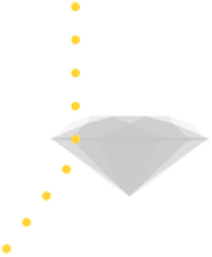

EXCELLENT & VERY GOOD CUTS
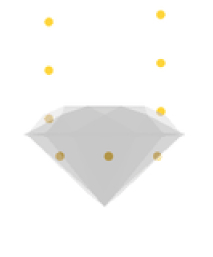

CUT
The way the diamond is cut will determine the sparkle and brilliance of the diamond. An excellent cut will reflect the optimum amount of light that enters the diamond. Lower quality cuts, such as good or poor, won’t reflect as much light and lack lustre.
PLATINUM
Platinum has become one of the most popular metals to be used in diamond earrings. Platinum is a naturally white coloured metal, meaning it will not tarnish and lose its brilliance. Platinum is also a very rare metal that is only mined in a few select areas of the world, making it a more expensive metal in comparison to Gold and Palladium.
Platinum will also enhance the colour of a diamond and its natural sparkle.
Platinum is usually hallmarked at ‘950’, meaning it is 95% pure platinum with the remaining 5% usually being palladium, iridium ruthenium and other alloys. Platinum is also a great choice for those who have contact allergies, as the purity of the platinum reduces the likelihood of any irritation during wear.
As with all metals, Platinum can scratch, however with proper care the wear should be minimal and can be polished again to return the metal to its original look.
18ct Rose Gold
This pink hue gold originally gained popularity in the 1920’s, then made a big comeback in the 2010’s. The unique blush tone of Rose Gold is created by mixing gold with copper. As all our gold earrings mounts are 18kt gold, the composition will be 75% gold, with 25% copper. A pair of Rose Gold Earrings gives an elegance that not all metals can achieve.
18ct White Gold
White Gold is still an incredibly popular choice of metal for earring settings. White Gold has the same overall appearance as Platinum, however it has a brighter ‘white shine’ and is less expensive than Platinum.
White gold is naturally an off-white colour, usually with a slight yellow tint. This is because white gold is usually mixed with palladium or magnesium.
To give white gold the trademark brightness, it is plated with rhodium or iridium. This plating will wear over time and return to its natural colour, however can be polishing and replated to return the metal to its former glory.
18ct Yellow Gold
Yellow Gold is a classic and timeless metal choice for any style of earrings. For thousands of years, yellow gold has been used in jewellery for its warmth in colour and its resistance to erosion. The colour of the gold is determined by what other metal alloys are mixed with it, such as copper and zinc.
CALL US
Speak to us on the phone by calling 1800456772
EMAIL US
Send an email to [email protected]













